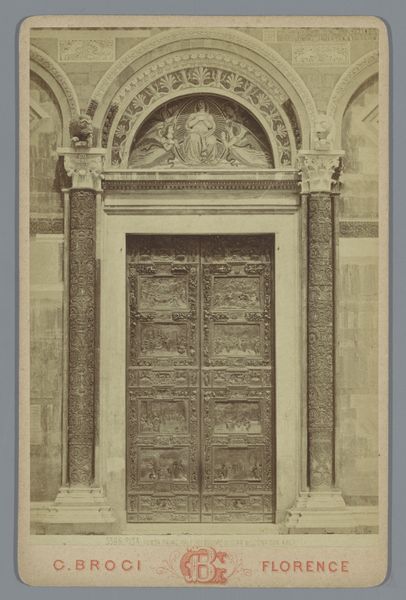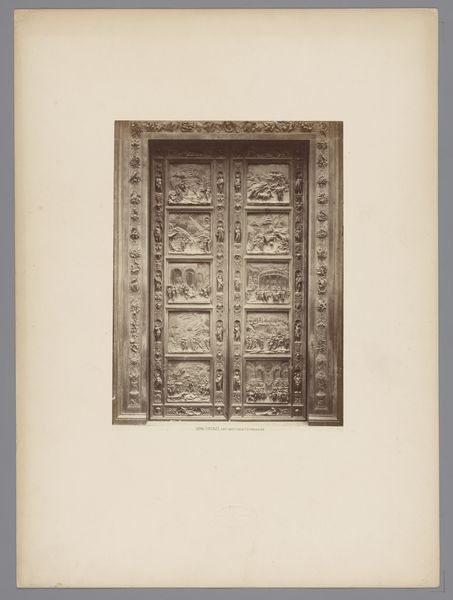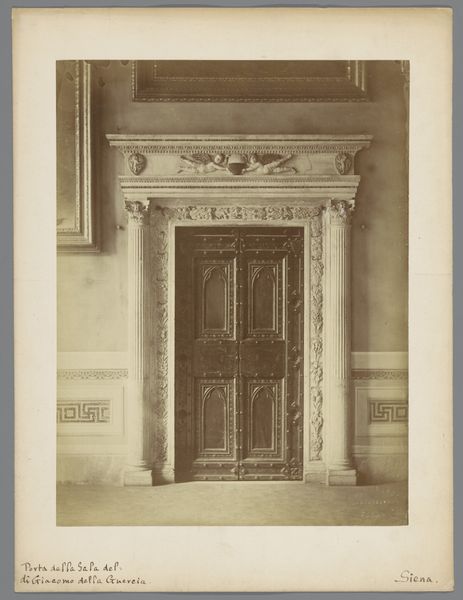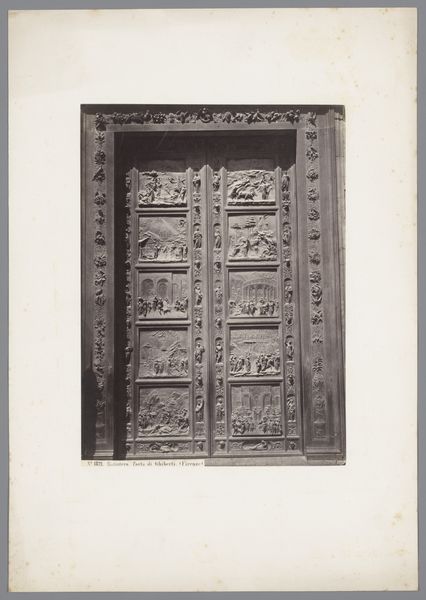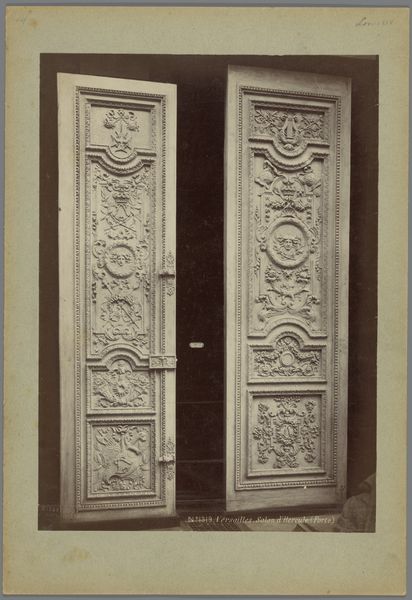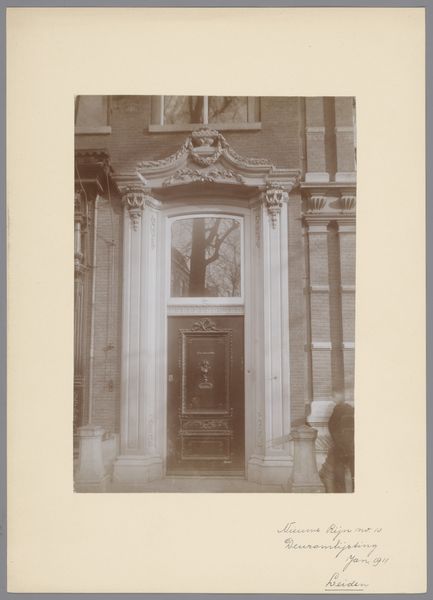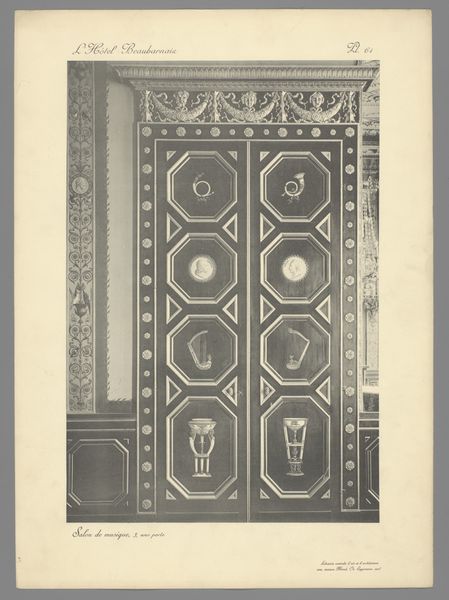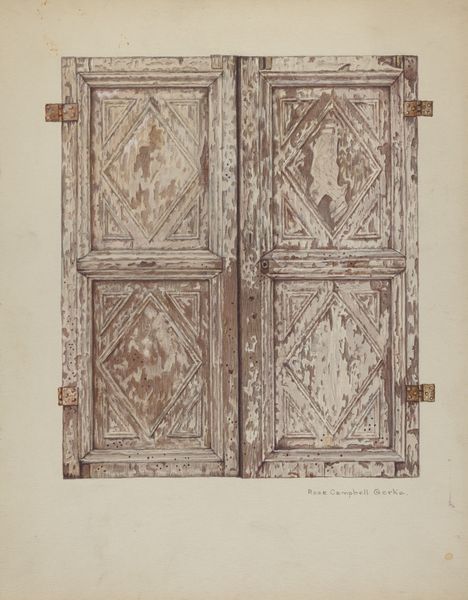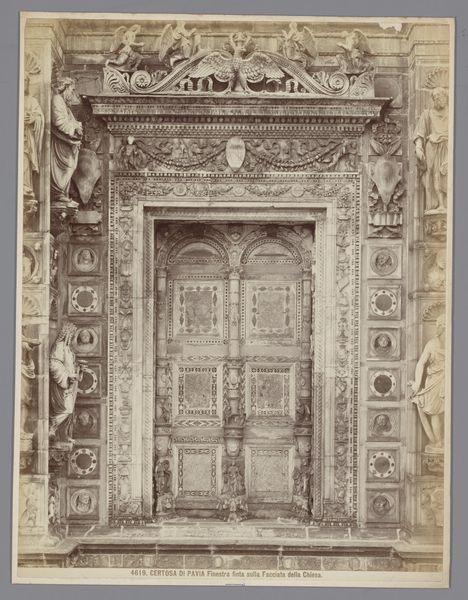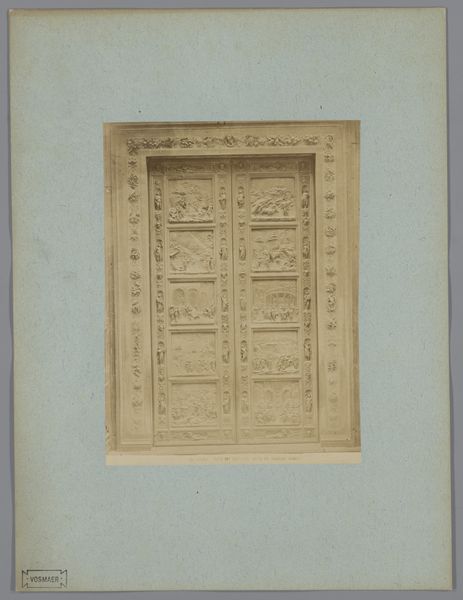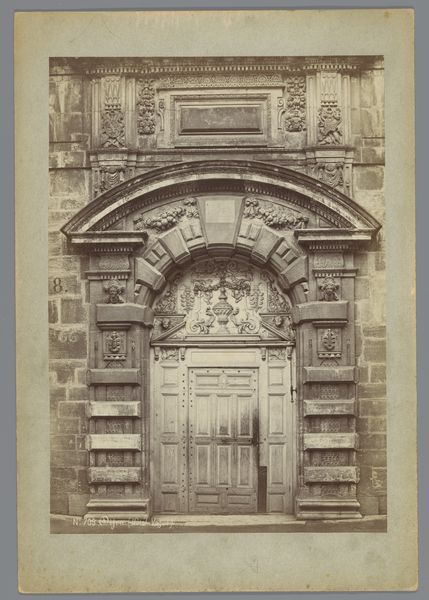
metal, relief, bronze, sculpture, architecture
#
medieval
#
narrative-art
#
metal
#
relief
#
bronze
#
figuration
#
historic architecture
#
sculpture
#
architecture
#
islamic-art
#
history-painting
#
italian-renaissance
#
architecture
Dimensions: height 245 mm, width 196 mm, height 302 mm, width 227 mm
Copyright: Rijks Museum: Open Domain
Editor: We’re looking at a photograph of the Eastern Bronze Doors of the Florence Baptistery in Italy, taken sometime between 1880 and 1920. They look so ornate. Each panel is brimming with figures, telling a story. What symbols and ideas stand out to you as you look at this? Curator: The overwhelming feeling is one of portals, both literal and figurative. A door signifies passage, doesn't it? In sacred architecture like this Baptistery, the door becomes a threshold to another realm, or at least a higher spiritual understanding. Look closely; what stories do these reliefs tell, and how do they resonate across time? Editor: I can see what looks like scenes from the Old Testament, with many figures enacting each panel. They seem to present scenes of struggle and reverence. The metal work is incredible; is there any psychological importance of it being a cast metal? Curator: Bronze itself is deeply symbolic. Think about its composition: a fusion of copper and tin. Alchemically, that speaks of union, strength born from combination. Then consider the lost-wax casting technique – a destructive process yielding creation. The metal becomes a potent metaphor for transformation and immortality. Does seeing the imagery laid upon a metallic alloy add a unique perception, considering this metaphor? Editor: Definitely. It makes you think about the stories as not just events, but as solid foundations – almost literally set in stone, or bronze in this case! It shows not just depictions of events, but these symbols being representative for generations of devotion. Curator: Precisely. These doors weren't just entryways; they were mnemonic devices, reinforcing cultural memory through visual storytelling. Each figure, each gesture, carries layers of meaning accessible to those versed in its symbolic language. In a sense, it mirrors Jung’s concept of collective unconscious—shared symbols and myths that shape our understanding across millennia. I wonder, are similar ideas like these present throughout various depictions in architecture globally? Editor: That’s amazing to think about. I’ll definitely be looking at doors in a new light from now on.
Comments
No comments
Be the first to comment and join the conversation on the ultimate creative platform.
